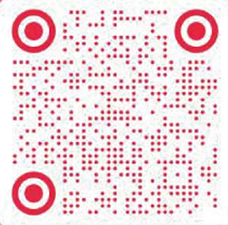From the very beginning, Zhang Xiaogang’s painting fascinated us with its lyrical, wavering, suppressed, narcissistic and self-pitying qualities. It bursts with all the possibilities of description. In Zhang’s case, this type of description is built on a foundation of memory and personal experience, and the latter has been intimately linked with his painting from very beginning as well. Throughout the whole of Zhang Xiaogang’s work, we may clearly understand a process of development and change in contemporary culture.
Zhang’s work embarks from a respect for individual instinct. It is this respect that so ardently couples his and Van Gogh’s passion for painting together. At the same time, this respect exists in accordance with the search for the meaning of life, where Zhang understands life to be the blaze of passion. This process went on until roughly 1993, when Zhang discovered, in a more diversified cultural setting, the value of the self. There on out, Zhang’s painting began to ascertain the position of the self in culture. His individual experience, understanding, memory and imagination came to embody an instinctual release of the emotions. The difference from before was that this release possessed its own logic and direction, both of which later would, in each step of the artist’s development, be gradually ever more reflected. From the series “Big Family” and “Amnesia and Memory” to “In-Out” and “Green Wall,” we can detect a process through which the culture of his self is consciously released and thus defined. In his newest work, we continue to feel the natural extension and development of his creation, though now he has placed greater emphasis on position, and perspective. This does not only apply to this exhibition. It is also a clarification of that position and perspective in his earlier work.
16: 9 is at present the prevalent screen format used in film, television and on computers, commonly referred to as “widescreen.” 16: 9 is the visual perspective and position from which we view our world, and we are ever more dependent on its dimensions in our perception of things. Zhang Xiaogang has symbolically clarified memory, reality and experience from this vantage point.
Ours is a world of screens that has already become the medium through which we receive information and knowledge of the self. This world inherently possesses a fictitious character, one that history and memory themselves share. For a painter, painting is in and of itself to create fiction. Of course, Zhang Xiaogang has no interest in creating fiction; he simply can’t avoid the fictitious world revolving around him. Constantly weaving and forming a personal relationship with Zhang, this world contains enough space for him to make full use of his expressive and imaginative abilities. In this “16: 9” exhibition, there are works from Zhang’s “Train Window” series. During the artist’s early learning and maturation period, trains (and riding in them) played an extremely important role, carrying Zhang to a world inside himself, a world that contained all the knowledge he would gain, opportunities he would have and friends he would make, a world he would come to perceive with his body. This world contained romantic longing (a young boy who played the violin), patterns of idealism (red plum blossom and green pine), as well as all the schools and countryside that reshaped every individual’s experience and education. With his use of line and even application of paint, Zhang attempts to re-experience, or at least to leave traces again on his experience, traces replete with all the tenderness of a caress. His use of color makes it seem as if a thin layer of sand were covering the entirety of the canvas, and the imagery of line conveys what seem to be the stains of tears that couldn’t bear to leave, searching for a lost connection. The “Heaven” series depicts a series of imagined relationships that are often inappropriate, and an impulse to re-define what those relationships mean. The artist has always been immersed in his perception of all sorts of relations, as visible in all his different periods and series. For him, depiction is not only expression of form, but a method for illustrating these relations as well. What’s interesting is that when art in the context of modern China was earliest taught to be used as a tool---and only a tool---for reflection, the artist as an individual had been ostracized. And that today, in accordance with the progress of the times, the artist as an individual has been given newfound respect, as a true practitioner of art, as someone who lives art; and that this “tool” has already thoroughly penetrated the development of all sorts of complex relations between the individual and society.
The 16: 9 aspect ratio is considered optimal for feature films and online gaming. Within this scale, then, what we have begun to experience is fictional life, fictional feelings. It works for the tear-jerking melodrama of TV dramas, and the thrill of online gaming. Our energy is suddenly expended on fictional feelings directed at mass audiences. What corresponds to the “real world” seems to no longer be part of the “historical world,” instead part of the “fictional world.” Real life is already being rebuilt under the constructs of fiction. Zhang Xiaogang is attempting to make contact with the truth through personal experience, and in depicting this process, he fictionalizes the relationship between memory and reality. Through this fiction, he releases himself; and history, memory and reality all become a component of this release.
As we in China live in a society that is developing at an unprecedented rate, our perception of reality and history may very well have nothing in common with that of any past era or of any other nation. The shape of history and reality changes with great speed, and because of this speed, history and reality appear to be overly buoyant. In the several works of this exhibition, we can see a life that is both fleeting and familiar. Zhang Xiaogang is trying to get a firm grip on that life, even if it is in a constant state of movement (the imagery of the train carriage and the medicine bottle). He must solidify a kind of hope, even if that hope only appears in the shadow of memory or history. Our era is like a train that constantly deserts the “now.” As this train carries us whistling towards the future, the artist has chosen to remain in one particular moment, hoping to keep the visible components of reality and history as part of his private memory. Remaining in that moment is a reaction against the fleeting nature of time, an individual’s transcription of public memory.
Zhang Xiaogang’s continual exploration and creation fulfills a process through which we construct the necessary consciousness of the self and thus are able to develop. We need him to persevere, to carry out his practice.
16:9 is the modern way of watching and seeing things. Together with the artist, we are here to confront this.

 Bologna Illustrators Exhibition 58th
Bologna Illustrators Exhibition 58th Zhiguan: Wang Zimu Art Exhibition
Zhiguan: Wang Zimu Art Exhibition Seasons of Cezanne The Immersive Experience
Seasons of Cezanne The Immersive Experience Marie de Villein: Behind the Sun
Marie de Villein: Behind the Sun “一粒一世界——北京大学颗粒艺术展”
“一粒一世界——北京大学颗粒艺术展”
 Florentijn Hofman :Celebrate!
Florentijn Hofman :Celebrate! Li Nu: As if Sand Were Stone
Li Nu: As if Sand Were Stone Exhibition customization course | TIM YIP MIRROR children's art class
Exhibition customization course | TIM YIP MIRROR children's art class
 TAM Open Studio / Hello, New Friends
TAM Open Studio / Hello, New Friends WANG SHIKUO/TODAY ART MUSEUM YOUNG ARTIST RESIDENCY IN NEW YORK CITY
WANG SHIKUO/TODAY ART MUSEUM YOUNG ARTIST RESIDENCY IN NEW YORK CITY 2018 third wang shikuo award -- nomination exhibition of contemporary young artists
2018 third wang shikuo award -- nomination exhibition of contemporary young artists











